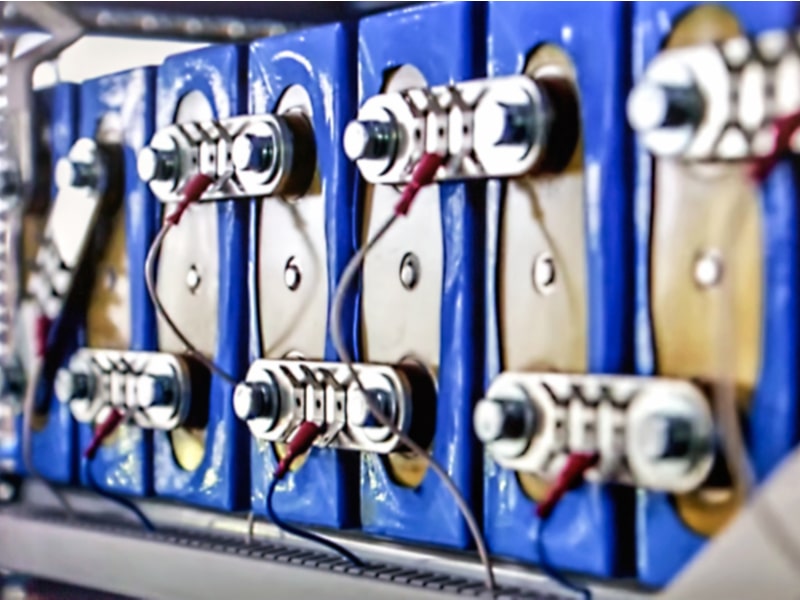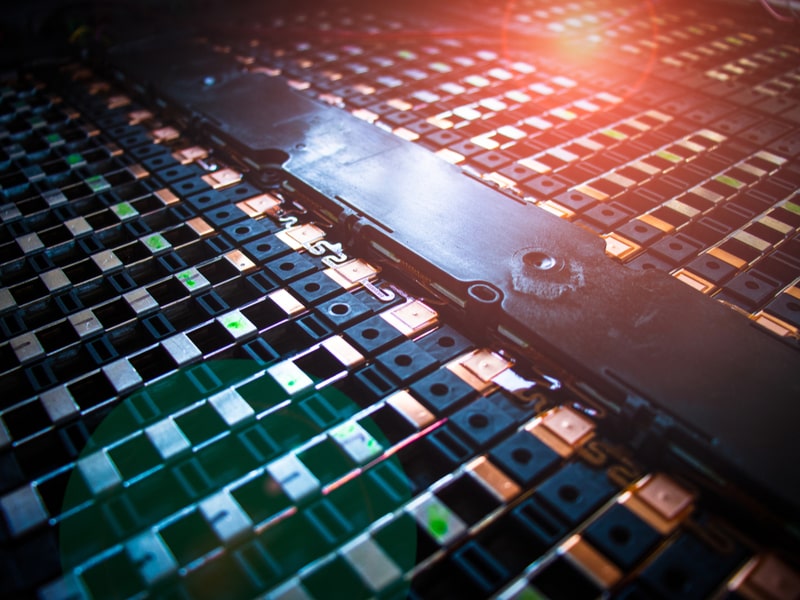The lithium ion battery is used in millions of electrical devices today. The fact that the lithium battery is so popular is due to its high energy density. A lithium-ion battery can store about three to four times more energy per kg of weight than nickel-cadmium batteries, which were widely used until the 1990s.
What happens inside when you charge a lithium ion battery
Lithium ion batteries began their worldwide triumphal march and today they are used in millions of different devices. The reason is their high energy density compared to other battery technologies, which allows the construction of small but powerful energy storage devices.
Like any electrochemical energy storage device, a lithium ion battery consists of two electrodes, the negative pole being called the anode and the positive pole the cathode. Anode and cathode are separated by a separator which is permeable to lithium ions. Ions are formed from atoms when they give or take up electrons. The space between the electrodes is also filled with an electrolyte. Electrolytes are solid or liquid materials that contain mobile ions but do not conduct electricity themselves.
In a newly charged lithium battery, the lithium is initially present at the anode in the form of electrically neutral lithium atoms. The anode material consists of graphite in which the lithium is embedded. What happens when electricity is consumed? Inside the battery, the lithium ions migrate through the electrolyte and the separator to the cathode and are stored there again. The anode material releases electrons during this process, which also flow to the cathode via the external circuit.
This process is reversed during the charging process. A voltage is applied through the charger that is higher than the voltage in the rechargeable battery. Therefore, the lithium ions migrate to the anode and are stored there. The lithium at the anode is at a higher potential, i.e. the lithium ion battery can now release energy again when the ions migrate back.
Thermal Runaway – When a lithium ion battery explodes
If there is a short circuit inside the battery, either because the electrodes are touching each other or there is a metallic connection between them, an uncontrolled electric current flows. In such a short time, enough energy can be released to generate such heat at certain points that the ignition temperature of the electrolyte is exceeded. The short-circuit here is only the prelude to the drama.
Further energy is released by the massive decomposition of the electrolyte. To make matters worse, oxygen is released internally at the cathode, which further intensifies the exothermic reaction. The lithium ion battery also provides itself with an internal fire accelerator. This self-reinforcing reaction can eventually lead to the explosion of the battery.

Causes of a short circuit in a lithium ion battery
In many cases it is production errors of the batteries that cause internal short circuits.
The risk has increased, because for a long time it was tried to develop thinner and thinner lithium batteries. The distances between anode and cathode became smaller and smaller. In the same way the separator became thinner and thinner. Contamination during the production process can cause metal chips to damage the separator. Metallic lithium poses a further danger. Normally the lithium ions are embedded between the graphite layers. This prevents the growth of metallic lithium.
However, in the case of extreme (cold) temperatures or under incorrect charging conditions, metallic lithium may be formed. So-called dendrites are formed in the process. Thin filaments of metallic lithium that continue to grow. The dendrites penetrate the separator and cause a short circuit. This danger is particularly prevalent in so-called primary cells, i.e. batteries that are not actually intended for recharging.
Lithium Ion Battery – What do you have to consider especially when charging?
Overall, lithium ion batteries are a very safe technology. There are billions of rechargeable batteries of this type worldwide that function perfectly, compared to the few dozen that make the headlines every now and then. If you observe the following safety rules when using them, you should actually be spared from accidents.
The most important rules for handling batteries and chargers:
- Never recharge disposable batteries.
- Never charge batteries that are visibly damaged. Never use dropped and/or damaged batteries again, but dispose of them properly. Mechanical damage can lead to fire.
- Recharge lithium-ion batteries in a dry state at room temperature and in a fireproof place.
- Charging lithium-ion batteries is also critical if they have not been used for a long time. Lithium-ion batteries can be permanently damaged by deep discharges.
- In cold temperatures and winter weather, do not store lithium-ion batteries in an unheated garage.
- Do not store, charge or use near hot surfaces and do not throw into fire.
- Only use certified chargers or chargers from the manufacturer.
- Do not disassemble or modify lithium-ion batteries.
- If the battery actually catches fire, do not extinguish with water! The reaction of lithium with water generates a lot of heat and the reaction products are caustic lithium lye (LiOH) and highly flammable hydrogen (H2)
Behind a lithium ion battery is basically a very safe technology. Short-circuits are mainly caused by production errors or when charging a damaged lithium ion battery. Above all, never recharge non-rechargeable batteries (disposable batteries).


